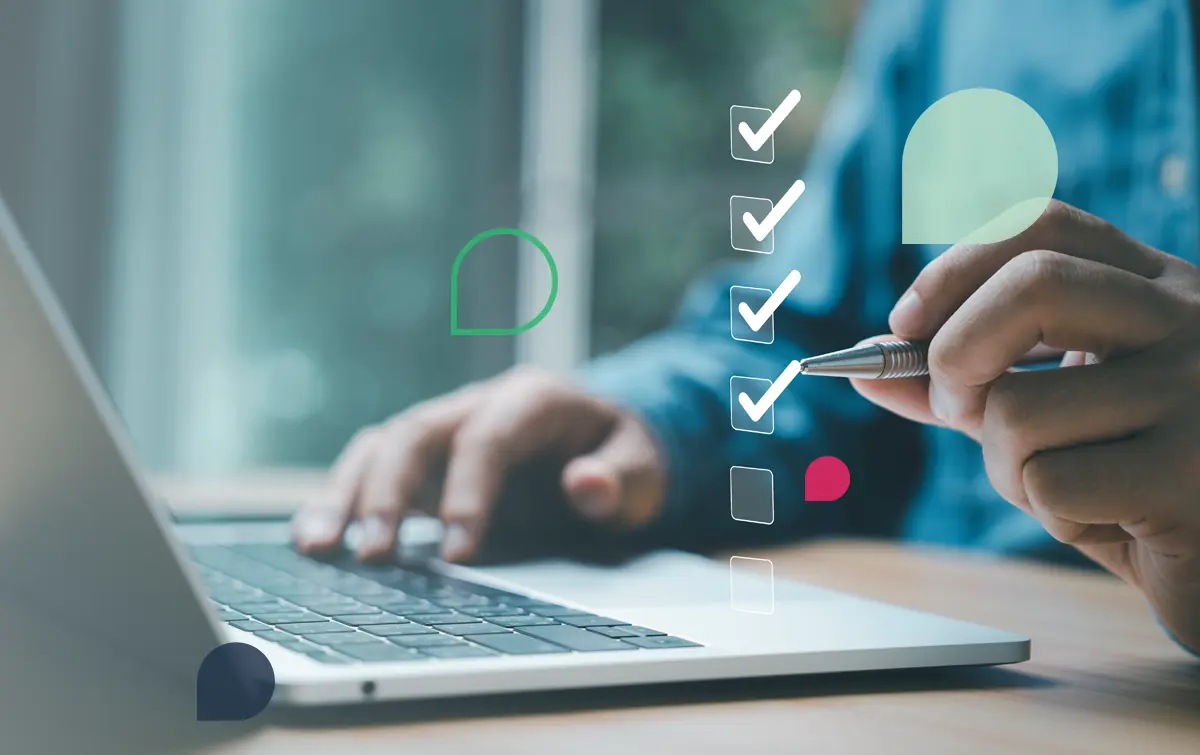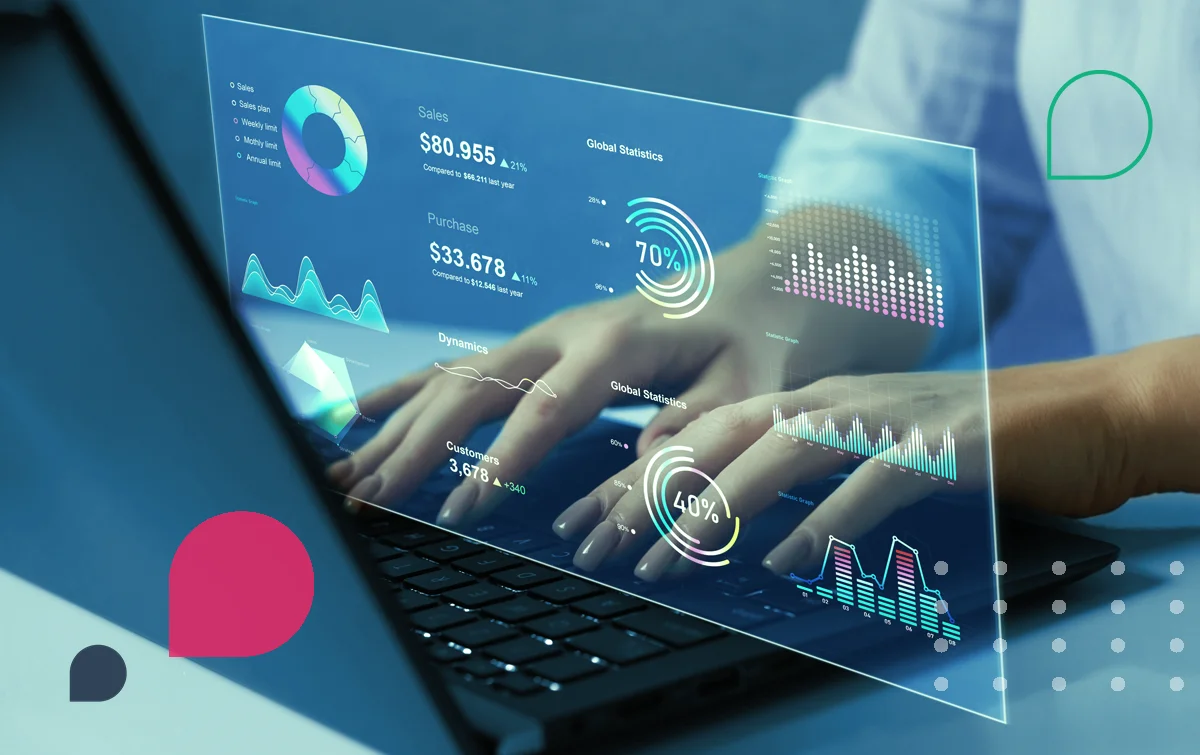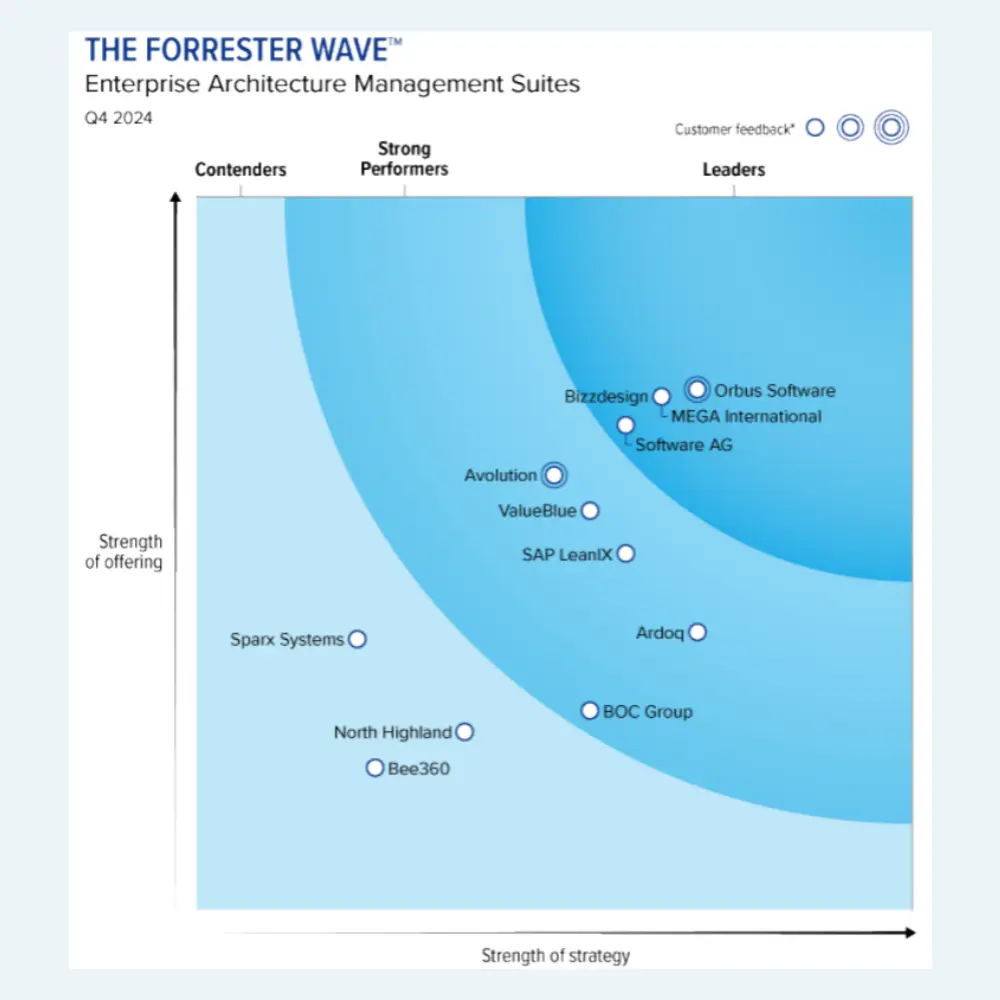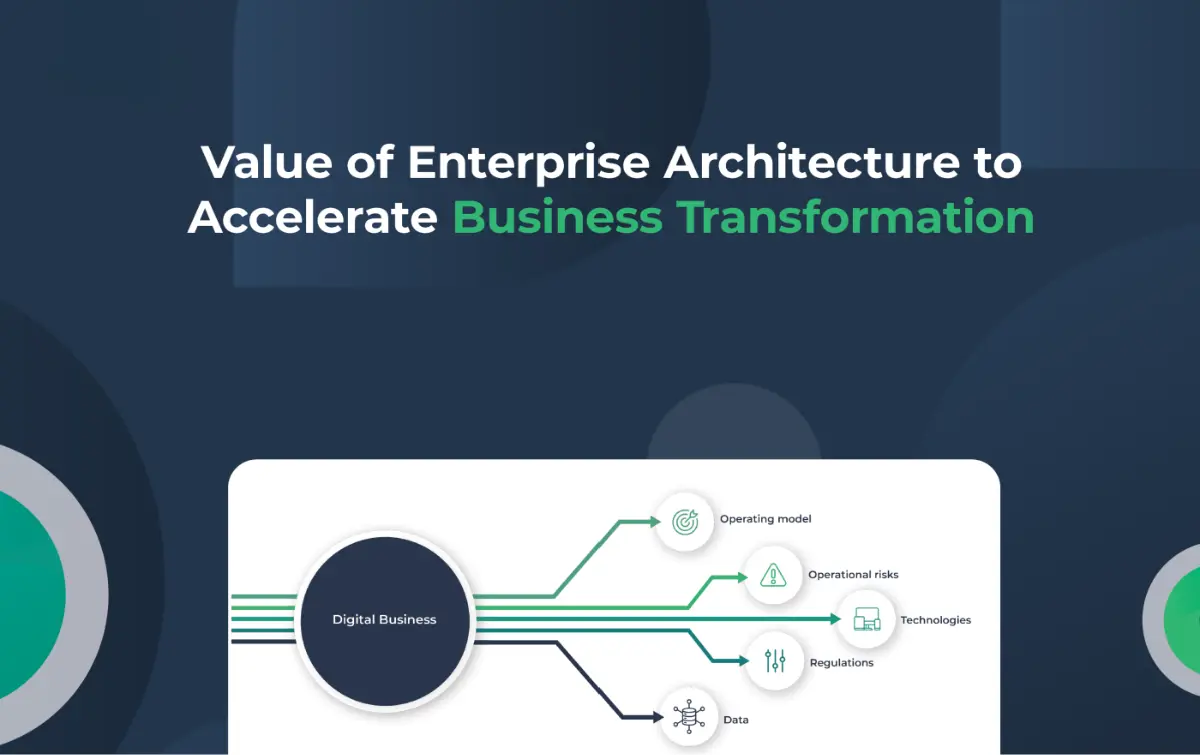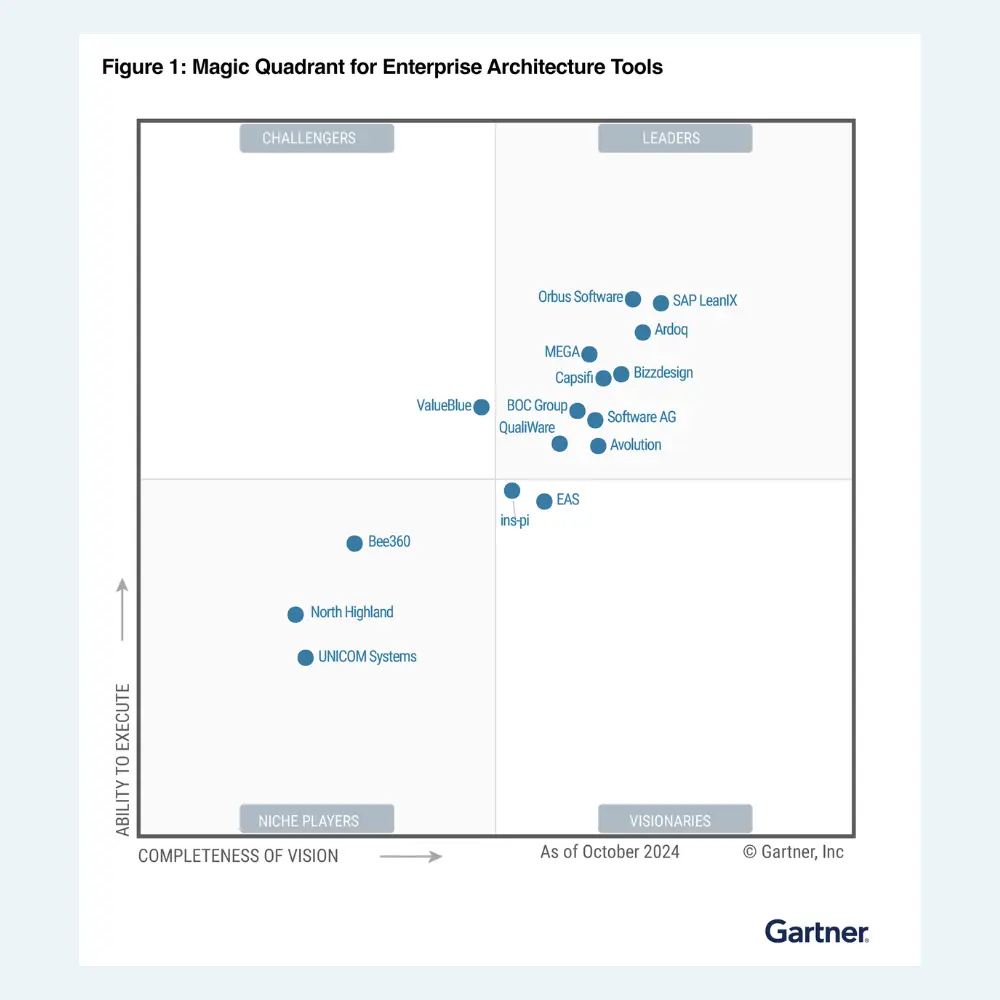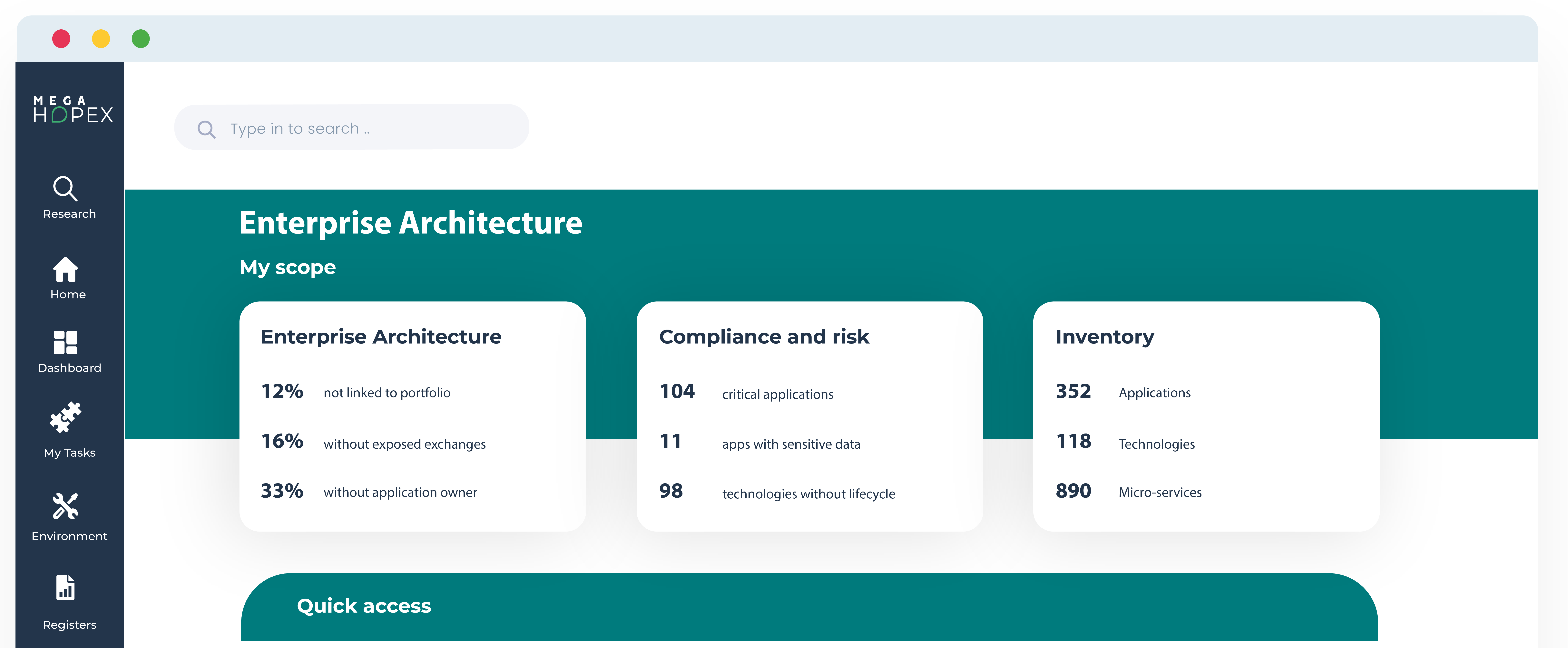
Application Modernization Roadmap: Your Step-by-Step Guide
An application modernization roadmap is a strategic plan that outlines the process of updating and enhancing a company's existing software applications to meet current business needs. It guides organizations in transforming their legacy systems into modern, efficient applications that can support their growth and innovation initiatives.
What Is an Application Modernization Roadmap?
Understanding the concept of an application modernization roadmap involves recognizing the importance of adapting older systems to meet present-day requirements.
Critical components of such a roadmap include assessing existing applications, defining modernization strategies, and creating step-by-step implementation plans.
Why Do You Need an App Modernization Roadmap?
Legacy app modernization is essential for organizations looking to stay competitive. A well-defined legacy application modernization roadmap is crucial to successfully navigating the application modernization process.
This roadmap helps outline the necessary steps, project management tasks, and milestones to achieve modernization goals. A practical app modernization roadmap will help prioritize tasks, allocate resources efficiently, and ensure a smooth transition to a new system.
The roadmap guides application development teams, outlining the software modernization approach and application inventory required for the modernization journey. With the help of a roadmap document, organizations can effectively track progress, make informed decisions, and ensure that the legacy modernization process stays on track.
How to Build an Effective Application Modernization Roadmap
Building a practical application modernization roadmap is essential for organizations that must update their software systems to meet evolving business needs.
Without a clear plan, modernization projects can quickly become overwhelming and costly. By creating a roadmap that outlines the app modernization process step by step, organizations can ensure that they stay on track and achieve their goals promptly.
This roadmap should include the app modernization strategies and a timeline for each project phase. It should also clearly define the modernization team's roles and responsibilities, ensuring everyone is on the same page throughout the process.
One key component of creating an application modernization roadmap is taking a strategic approach to modernization. This involves assessing the current state of the organization's application landscape and determining which systems need an update.
When creating a modernization roadmap, organizations should consider the benefits of using application modernization services to support their efforts.
These services can provide valuable expertise and resources to help organizations navigate the complexities of modernization projects. In addition, tools such as project management software can help organizations track progress, communicate effectively with team members, and manage resources more efficiently.
Here’s a step-by-step guide to help you develop a roadmap for modernizing your applications:
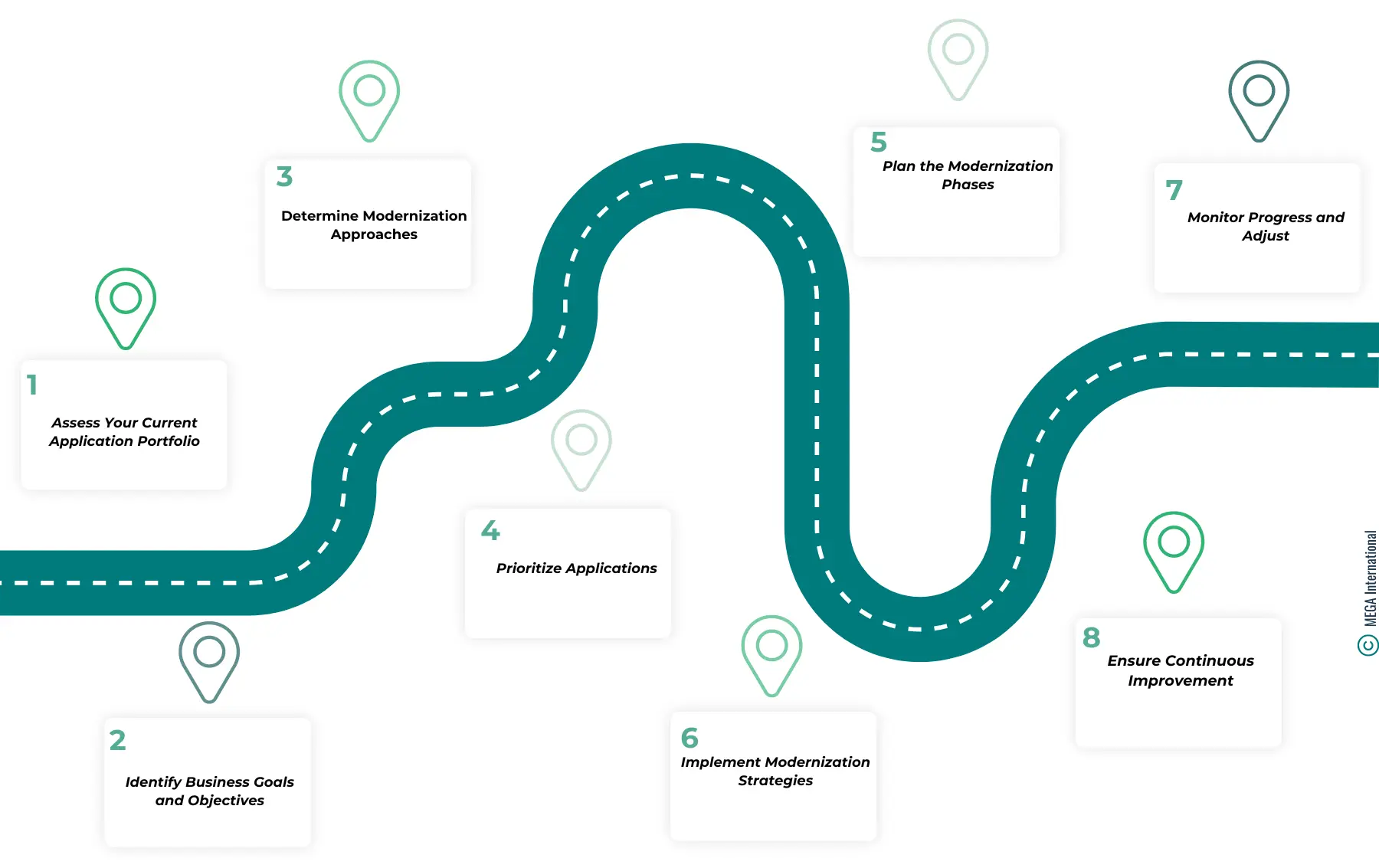
1. Assess Your Current Application Portfolio
- Inventory Existing Applications: List all the applications currently in use, noting their purpose, technology stack, dependencies, and business importance.
- Evaluate Application Performance and Costs: Assess how well each application meets business needs, operational costs, and performance issues.
2. Identify Business Goals and Objectives
- Align with Business Strategy: Understand the broader business goals and how modernizing applications can support these objectives.
- Define Success Metrics: Establish clear metrics that will help measure the success of the modernization efforts, such as improved performance, reduced costs, or enhanced user satisfaction.
3. Determine Modernization Approaches
- Rehost: Move applications to a new environment without changing their code (often to the cloud).
- Refactor: Modify the application's code to better leverage new cloud-native technologies without altering its external behavior.
- Rearchitect: Change the application’s architecture to scale and perform optimally in a cloud environment.
- Rebuild: Rewrite the application from scratch while preserving its scope and specifications.
- Replace: Replace the application with a newer, more efficient solution that meets the exact needs.
4. Prioritize Applications
- Criticality and Readiness: Prioritize applications based on their business criticality and readiness for modernization.
- Quick Wins: Identify applications that can provide quick benefits with minimal effort to gain momentum and justify the investment.
5. Plan the Modernization Phases
- Incremental Approach: To manage risks effectively, break the modernization process into manageable phases, starting with less complex applications.
- Timeline and Resources: Develop a detailed timeline and allocate resources, including budget and personnel.
6. Implement Modernization Strategies
- Technical Implementation: Start the coding, migration, and testing processes based on the chosen strategy.
- Change Management: Manage the change among stakeholders and users through communication, training, and support.
7. Monitor Progress and Adjust
- Continuous Assessment: Regularly evaluate the progress against the set metrics and objectives.
- Feedback Loop: Incorporate feedback from users and stakeholders to refine the process and make adjustments as needed.
8. Ensure Continuous Improvement
- Iterative Optimization: After modernization, update and optimize applications to leverage new technologies and meet evolving business needs.
- Lessons Learned: Document lessons learned and integrate these insights into future modernization projects.
Challenges in Legacy Application Modernization
Many organizations need help with app modernization, which can hinder the success of their projects. One key challenge is the lack of a detailed roadmap for effective app modernization.
Here are some common obstacles organizations might face during the process:
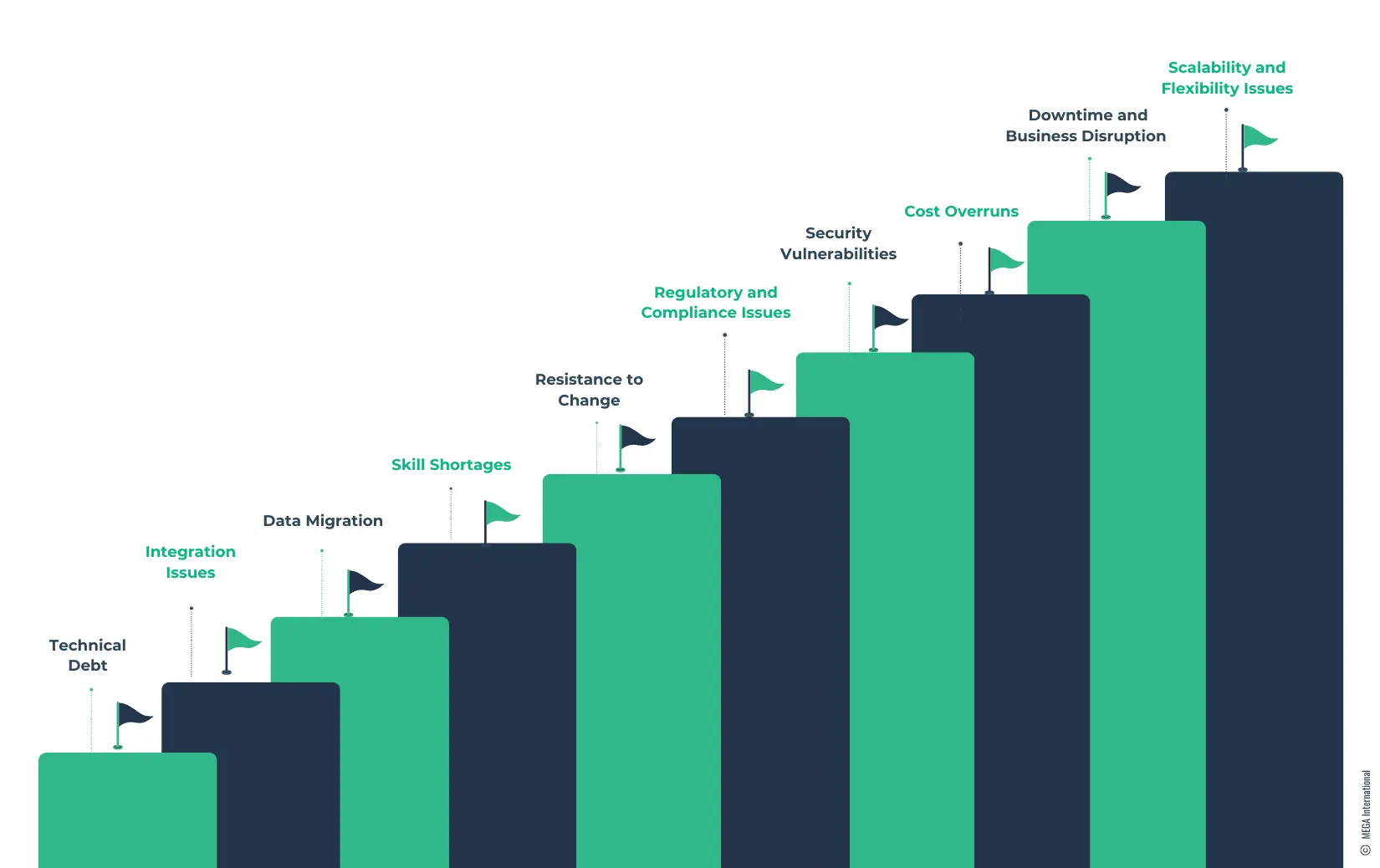
1. Technical Debt
Legacy systems often accumulate technical debt due to outdated programming languages, obsolete frameworks, and deprecated libraries. Addressing this debt requires significant resources and time, making modernization more complex and costly.
2. Integration Issues
Legacy applications may be tightly integrated with other systems and processes that rely on outdated technology, challenging decoupling these applications for modernization. In contrast, ensuring continued functionality across systems can be delicate and challenging.
3. Data Migration
Migrating data from old systems to new platforms can be challenging, including data loss, corruption, and compatibility issues. Ensuring data integrity and continuity is crucial but often complex, requiring careful planning and robust data migration tools.
4. Skill Shortages
The expertise required to maintain and modernize legacy systems may be scarce as newer IT professionals are more familiar with modern technologies. This gap can lead to difficulties in managing, updating, and replacing legacy systems.
5. Resistance to Change
Organizational resistance to change can significantly hinder modernization efforts. Employees accustomed to the old systems may be reluctant to adopt new technologies, necessitating comprehensive training and change management strategies to ease the transition.
6. Regulatory and Compliance Issues
Legacy applications often operate under stringent regulatory and compliance frameworks. Ensuring modernized applications comply with these regulations without disrupting service or exposing the organization to legal risks adds another layer of complexity.
7. Security Vulnerabilities
Older applications may have security vulnerabilities no longer addressed in updates or patches. Modernizing these applications requires updating their features and fortifying security measures to protect against contemporary threats.
8. Cost Overruns
The financial aspect of modernizing legacy applications can be daunting. Budget overruns are common, as unexpected challenges can arise during modernization, requiring additional resources.
9. Downtime and Business Disruption
Minimizing downtime during the modernization process is critical to maintaining business operations. However, transitioning from legacy systems often involves periods of downtime, which can disrupt business activities and result in revenue loss.
10. Scalability and Flexibility Issues
Finally, legacy systems often need to be designed for the scalability and flexibility of modern business operations. Modifying these systems to meet current demands without compromising system stability poses a significant challenge.
| With a clear project plan, organizations may be able to prioritize tasks and allocate resources efficiently, leading to delays and cost overruns. Many modernization projects fail due to a lack of a strategic app modernization approach and a well-defined roadmap. |
Best Practices for a Successful Application Modernization Project
Embarking on an application modernization project can be a transformative step for any organization aiming to stay competitive and efficient. Here are some best practices to ensure a successful application modernization project:
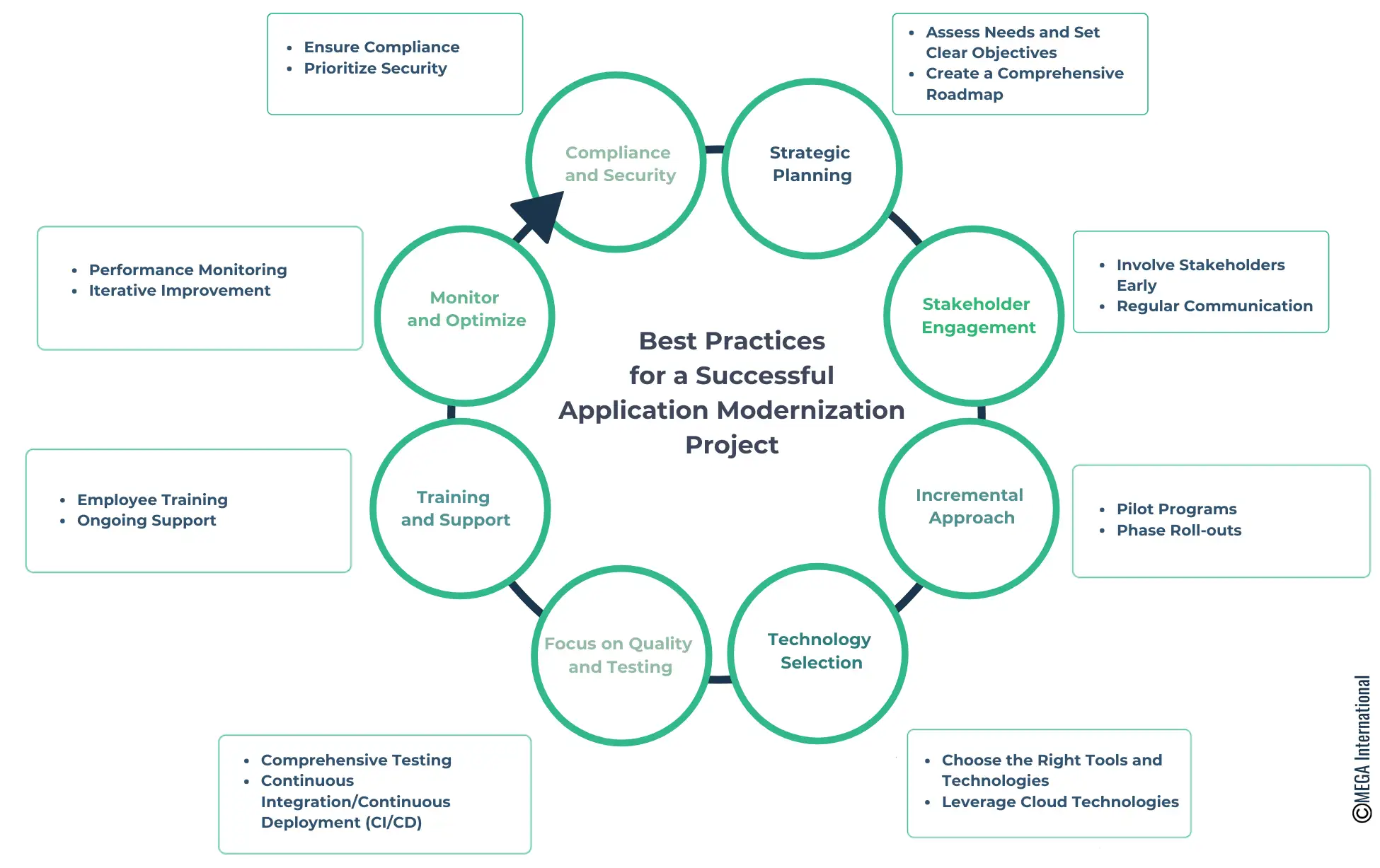
1. Strategic Planning
- Assess Needs and Set Clear Objectives: Before starting, understand what you hope to achieve with modernization. Align project goals with business strategies and consider how these changes will improve operations, customer satisfaction, or profitability.
- Create a Comprehensive Roadmap: Develop a detailed plan that outlines each step of the modernization process, including timelines, resources needed, and expected outcomes. This roadmap should also consider potential risks and include strategies for mitigating them.
2. Stakeholder Engagement
- Involve Stakeholders Early: Engage with all stakeholders, including IT staff, end users, and executive leadership, to gather input and ensure their needs are met. This helps in gaining buy-in and makes the transition smoother for everyone involved.
- Regular Communication: Keep stakeholders informed about progress, challenges, and changes throughout the project. This transparency helps manage expectations and fosters a collaborative environment.
3. Incremental Approach
- Pilot Programs: Test modernization strategies on smaller, less critical applications before scaling up. This allows you to identify potential issues early and refine your approach accordingly.
- Phase Roll-outs: Implement the modernization in phases. This approach minimizes disruptions to ongoing operations and allows for adjustments based on feedback and early outcomes.
4. Technology Selection
- Choose the Right Tools and Technologies: Select technologies that meet current needs and are scalable and flexible enough to adapt to future requirements. Consider factors like support, community, and longevity.
- Leverage Cloud Technologies: Utilize cloud solutions to enhance flexibility, scalability, and cost-efficiency. Cloud platforms often offer advanced security, compliance, and disaster recovery options.
5. Focus on Quality and Testing
- Comprehensive Testing: Implement rigorous testing phases to ensure that modernized applications meet quality standards and business requirements. This includes unit, integration, performance, and security testing.
- Continuous Integration/Continuous Deployment (CI/CD): Adopt CI/CD practices to automate testing and deployment processes. This helps maintain high quality and rapid update delivery.
6. Training and Support
- Employee Training: Provide adequate training and resources to help employees adapt to new systems and technologies. This reduces resistance to change and increases productivity.
- Ongoing Support: Establish a support system for addressing issues as they arise post-deployment. This includes technical support, user documentation, and possibly a help desk.
7. Monitor and Optimize
- Performance Monitoring: Continuously monitor modernized applications' performance to ensure they deliver the desired outcomes. Use metrics and feedback to gauge success.
- Iterative Improvement: Treat modernization as an ongoing process rather than a one-time project. Regularly revisit and revise the applications to incorporate new technologies and improvements based on user feedback.
8. Compliance and Security
- Ensure Compliance: Modernized applications must comply with all relevant laws, regulations, and industry standards. This is crucial for avoiding legal and financial penalties.
- Prioritize Security: Strengthen security measures during the modernization process. Address vulnerabilities, implement modern security protocols, and handle all data securely.
Benefits of a Well-Defined Roadmap
A well-defined roadmap in any project offers numerous benefits, particularly in technology and business initiatives like application modernization. It is a strategic plan outlining the steps to achieve specified goals over time. Here are some key benefits of having a well-defined roadmap:
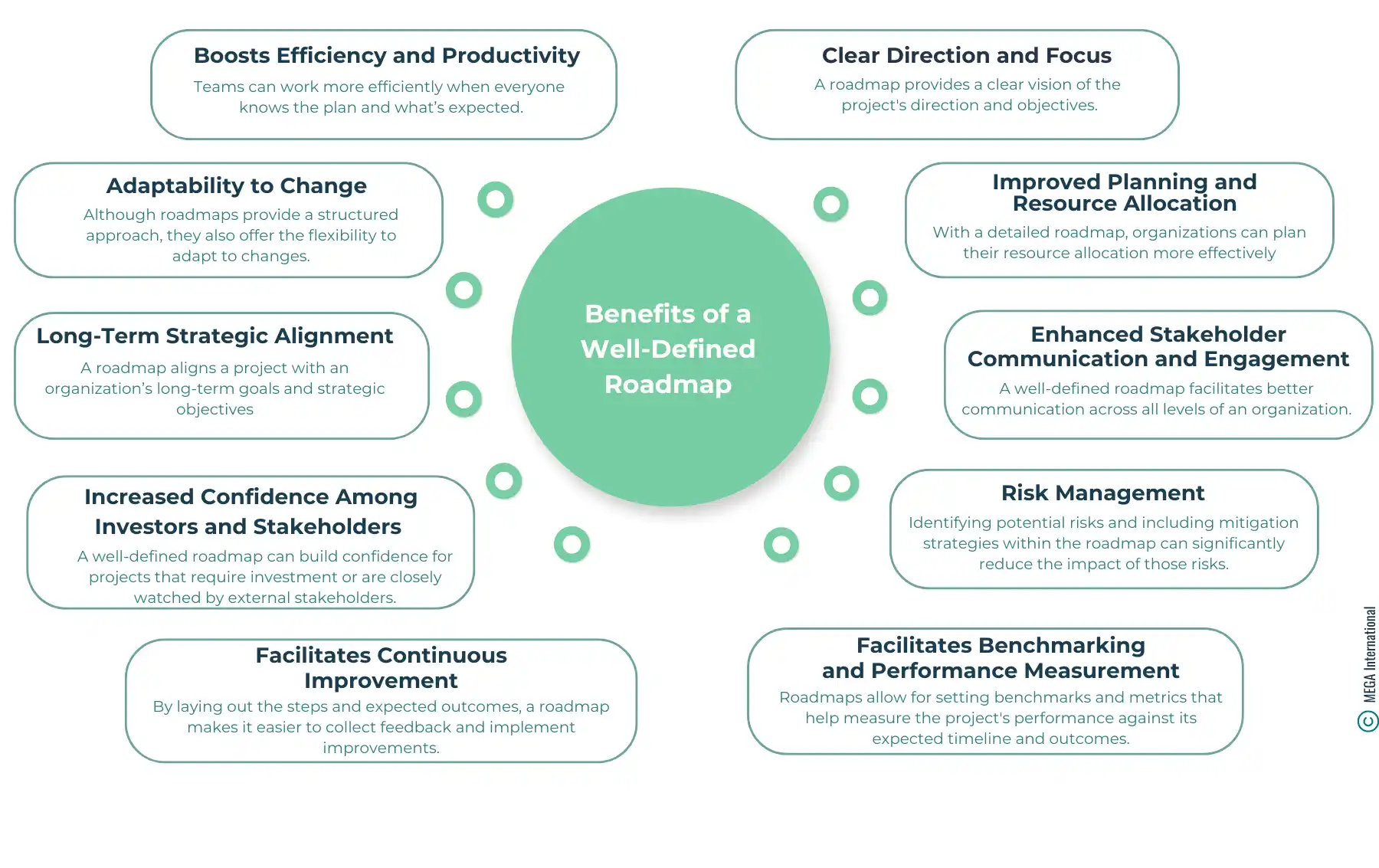
1. Clear Direction and Focus
A roadmap provides a clear vision of the project's direction and objectives. It helps to align the efforts of different teams and departments by setting shared goals and timelines. This focus ensures all stakeholders work towards the same results, minimizing miscommunication and misaligned efforts.
2. Improved Planning and Resource Allocation
With a detailed roadmap, organizations can plan their resource allocation more effectively. It allows managers to anticipate needs for manpower, technology, and budget at various project stages, reducing the likelihood of resource shortages or bottlenecks that could delay progress.
3. Enhanced Stakeholder Communication and Engagement
A well-defined roadmap facilitates better communication across all levels of an organization. Clearly outlining the project phases and expected outcomes keep stakeholders informed and engaged. This transparency helps build trust and can ease the change management process as the project progresses.
4. Risk Management
Identifying potential risks and including mitigation strategies within the roadmap can significantly reduce their impact. Proactive risk management helps avoid costly setbacks and ensures the project stays on track.
5. Facilitates Benchmarking and Performance Measurement
Roadmaps allow for setting benchmarks and metrics that help measure the project's performance against its expected timeline and outcomes. Regularly checking these benchmarks helps to quickly identify areas where the project may be lagging and allows for timely adjustments.
6. Boosts Efficiency and Productivity
Teams can work more efficiently when everyone knows the plan and what's expected. A roadmap reduces the need for redundant meetings and discussions to realign or clarify goals, thus saving time and increasing productivity.
7. Adaptability to Change
Although roadmaps provide a structured approach, they also offer the flexibility to adapt to changes. A well-crafted roadmap includes checkpoints where strategies can be reviewed and revised in response to new information or changing conditions in the market or technology.
8. Long-Term Strategic Alignment
A roadmap aligns a project with an organization's long-term goals and strategic objectives. This ensures that the project outcomes will support the organization's broader aims, thereby improving the return on investment and contributing to sustainable growth.
9. Increased Confidence Among Investors and Stakeholders
A well-defined roadmap can build confidence for projects that require investment or are closely watched by external stakeholders. It shows a commitment to a vision and the steps the organization intends to take to reach it, which can be reassuring to investors and partners.
10. Facilitates Continuous Improvement
By laying out the steps and expected outcomes, a roadmap makes it easier to collect feedback and implement improvements. This iterative process can lead to continual enhancements in processes, products, or services, driving innovation and keeping the organization competitive.
How HOPEX Assists in Developing the Application Modernization Roadmap
HOPEX provides integrated solutions for enterprise architecture, risk management, and IT portfolio management. It is precious in the context of application modernization because it offers tools and methodologies that help organizations plan, execute, and manage their modernization initiatives more effectively. Here's how HOPEX can support an application modernization roadmap:
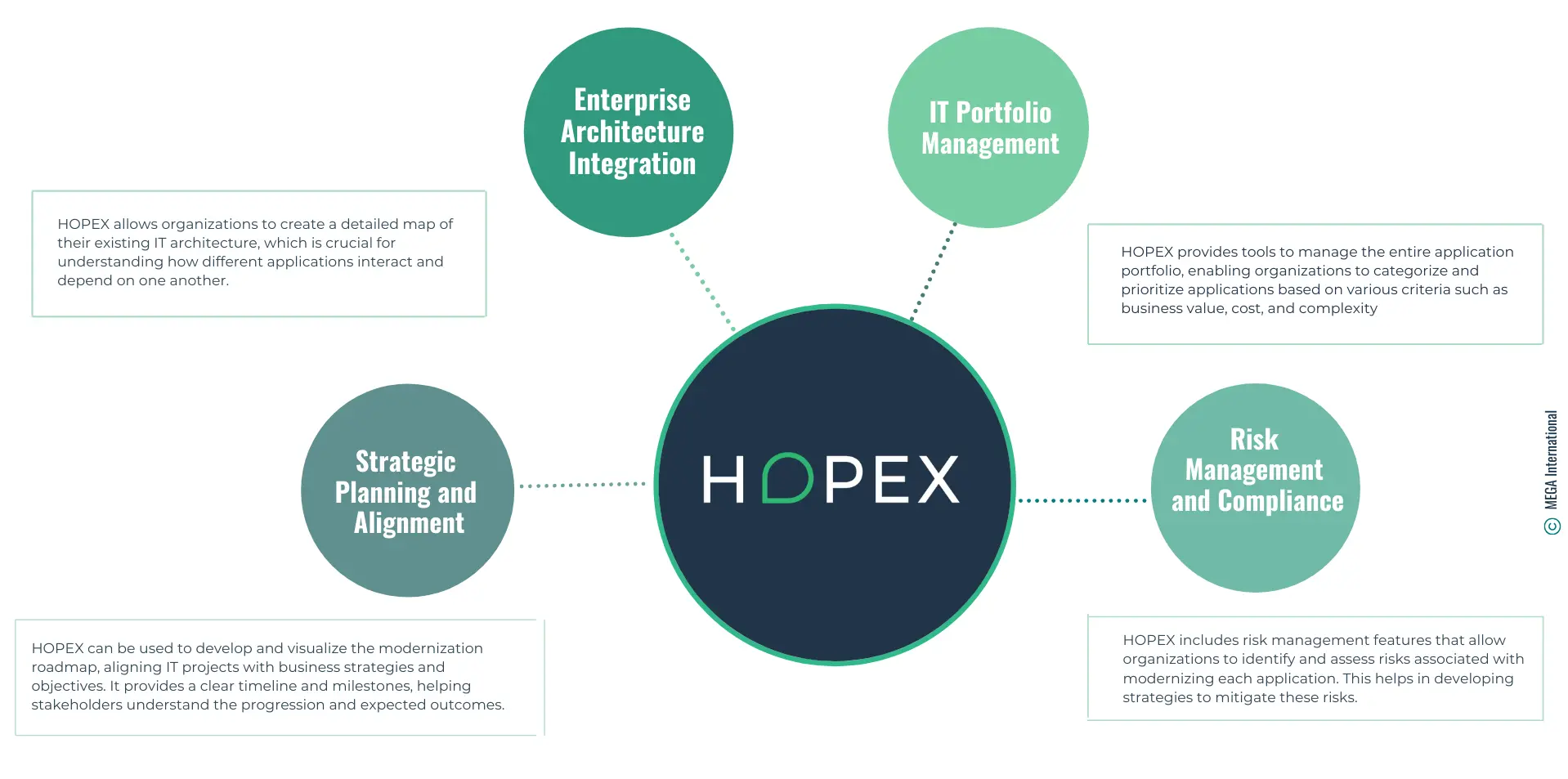
1. Enterprise Architecture Integration
- Comprehensive Mapping: HOPEX allows organizations to create a detailed map of their existing IT architecture, which is crucial for understanding how different applications interact and depend on one another. This insight is essential when deciding how best to modernize each application.
- Impact Analysis: Through its enterprise architecture capabilities, HOPEX helps conduct impact analyses to understand the implications of proposed changes, minimizing risks associated with the modernization process.
2. IT Portfolio Management
- Application Portfolio Management: HOPEX provides tools to manage the entire application portfolio, enabling organizations to categorize and prioritize applications based on various criteria such as business value, cost, and complexity. This helps make informed decisions about which applications to modernize, replace, or retire.
- Resource Optimization: By analyzing IT assets' current use and cost, HOPEX helps organizations allocate resources more effectively during modernization.
3. Risk Management and Compliance
- Risk Assessment: HOPEX includes risk management features that allow organizations to identify and assess risks associated with modernizing each application. This helps in developing strategies to mitigate these risks.
- Regulatory Compliance: The platform ensures that all modernization efforts comply with relevant laws and regulations, which is particularly important for industries subject to strict regulatory requirements.
4. Strategic Planning and Alignment
- Roadmap Development: HOPEX can be used to develop and visualize the modernization roadmap, aligning IT projects with business strategies and objectives. It provides a clear timeline and milestones, helping stakeholders understand the progression and expected outcomes.
- Change Management: HOPEX supports change management processes by enabling clear organizational communication about the modernization project's goals and benefits. This is key to ensuring buy-in and facilitating a smoother transition.
Fresh Perspective: Application Modernization Roadmap and AI
Incorporating artificial intelligence (AI) into an application modernization roadmap offers a fresh and transformative perspective to traditional modernization strategies.
Here’s how AI can revolutionize an application modernization roadmap:
1. Enhanced Assessment and Planning
- AI-driven Insights: AI can process and analyze vast amounts of data from existing systems to provide detailed insights about application performance, usage patterns, and potential bottlenecks. These insights enable precise identification of modernization priorities and requirements.
- Predictive Capabilities: AI models can forecast future trends and application behavior, allowing organizations to plan proactively rather than reactively. This foresight helps in aligning modernization efforts with anticipated business needs.
2. Streamlined Modernization Execution
- Code Conversion and Optimization: AI tools can automatically convert legacy code into modern languages and frameworks, reducing manual effort and speeding up modernization. Additionally, AI can suggest code optimizations to improve efficiency and performance.
- Resource Optimization: In cloud-based modernizations, AI can dynamically manage and optimize cloud resources to ensure cost-efficiency and performance scalability based on real-time demand.
3. Automated Quality Assurance
- Innovative Testing: AI can automate the creation and execution of test cases, making the testing process faster and more effective. It can identify high-risk areas and focus testing efforts where they are most needed, enhancing the quality of the modernized application.
- Continuous Monitoring: Using AI for constant monitoring allows for the real-time detection of operational issues or performance deviations, enabling immediate corrective actions.
4. Ongoing Improvement and Adaptation
- Learning Systems: AI systems can learn from ongoing operations and user interactions, continuously adapting and optimizing the application post-modernization. This learning mechanism ensures that the application evolves in response to changing user needs and technological advancements.
- Feedback Analysis: AI can analyze user feedback across multiple platforms to glean insights into user satisfaction and improvement areas, facilitating swift and informed enhancements
5. Enhanced Change Management
- Predictive Impact Analysis: AI can predict the impacts of proposed changes, helping stakeholders visualize potential outcomes and adjust strategies accordingly.
- Customized Training Modules: AI can design personalized training modules based on user roles and previous interactions with the system, ensuring effective user adaptation to modernized applications.
6. Data-Driven Decision Making
- Decision Support: AI can aggregate and analyze data to provide actionable insights and recommendations, supporting decision-makers in aligning modernization efforts with strategic business objectives.
Integrating AI into the application modernization roadmap redefines traditional approaches by adding a layer of intelligence and automation.
| This integration enhances the speed and quality of modernization efforts and ensures that the modernized applications are robust, scalable, and aligned with future business landscapes. |
This fresh perspective facilitates a proactive, data-driven, and adaptive approach to application modernization, leading to more strategic and successful outcomes.
Get a complimentary copy: 2024 Gartner® Magic Quadrant™ for Enterprise Architecture Tools
Increase visibility and rationalize your IT portfolio with APM
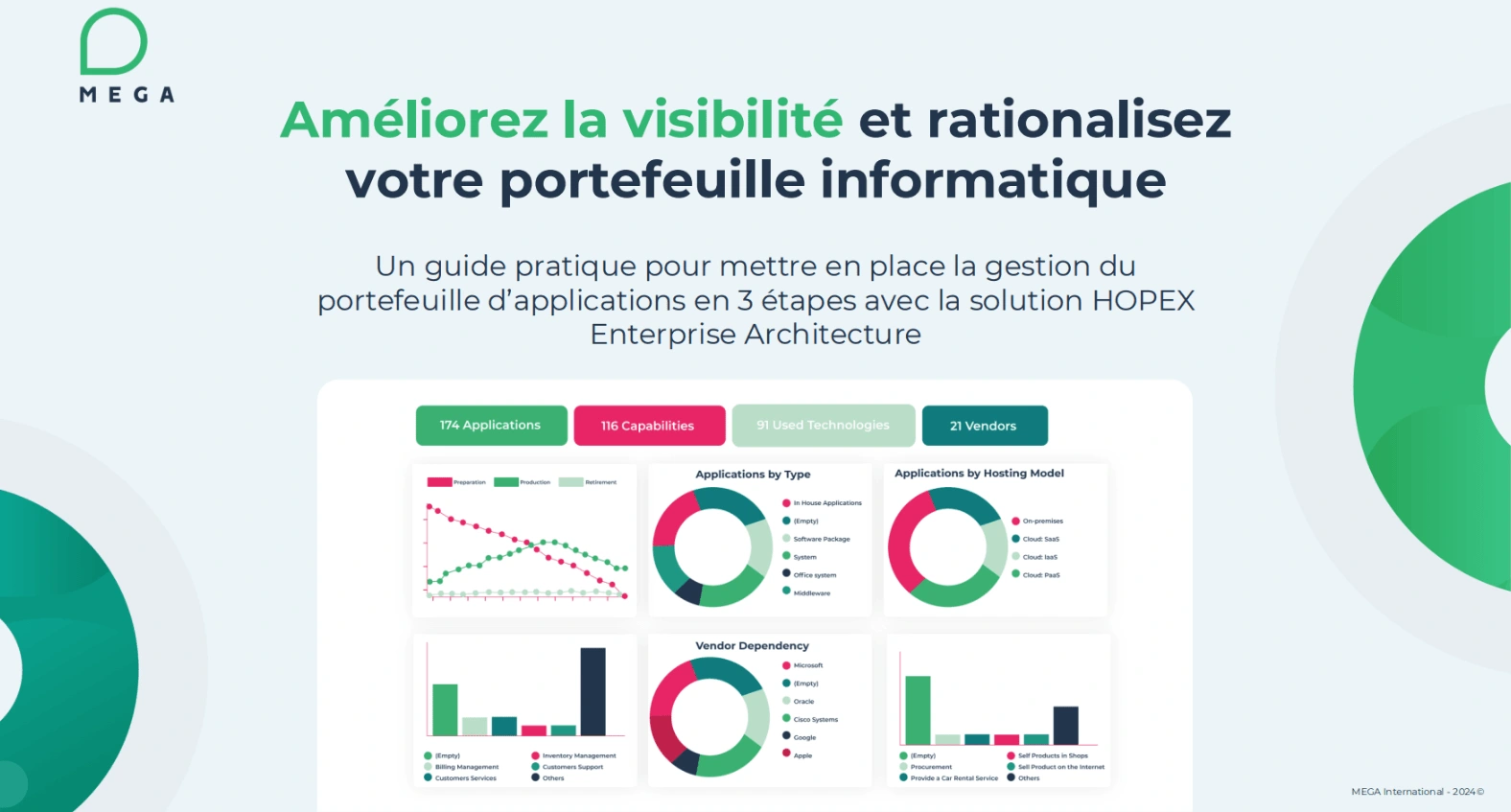
Get an effective methodology to set up and achieve a successful application rationalization initiative.
Enterprise Architecture Related Content
Shift from a documentation tool to an operational tool and accelerate business transformation
MEGA HOPEX for Enterprise Architecture
Request a demonstration of HOPEX for EA, and see how you can have immediate value of your projects.








